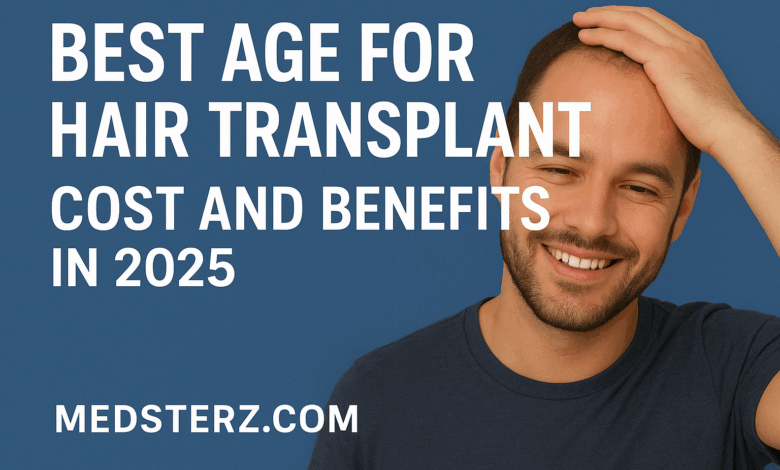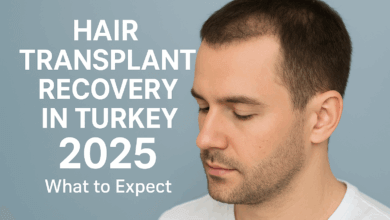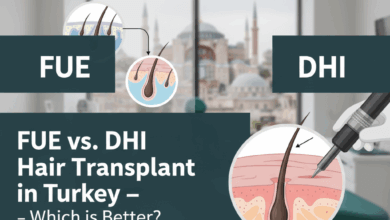Best Age for Hair Transplant – What Experts Recommend in 2025
When timing your procedure matters: finding the ideal age window, what to consider, and how to plan for long-lasting natural results

Introduction
Hair transplants have become increasingly popular—and affordable—in recent years. But one question pops up almost everywhere: “What is the best age to undergo a hair transplant?” Choosing the right age is crucial to ensure stable results, natural appearance, and minimal risk of needing multiple surgeries.
In this article, we’ll explore expert opinions from 2025, medical guidelines, pros & cons by age group, and tips to help you decide when you should get a hair transplant.
Why Age Matters in Hair Transplant Outcomes
-
Pattern Stability: Younger people often have a hair loss pattern that hasn’t fully emerged, so transplanted areas may end up isolating as native hair continues to fall. Haber Dermatology+2centerforadvancedhairrestoration.com+2
-
Donor Hair Quality: The donor area (usually back and sides of the head) must have strong, dense hair. As age increases, donor hair density and scalp skin elasticity can decline. Medart Hair+1
-
Healing & Recovery: Younger patients tend to heal faster; older patients may face slower recovery and less robust regenerative capacity. My Blog+1
-
Expectations & Hairline Design: Designing a hairline or coverage plan that “ages well”—meaning it remains natural-looking as more hair loss occurs—is easier when you understand how your hair loss is progressing. My Blog+1
What Ages Do Experts Recommend?
| Age Range | Typical Expert Opinion | Pros | Cons |
|---|---|---|---|
| Under 25 years | Usually discouraged unless hair loss is from trauma or scarring. Most ethical clinics wait until later. Haber Dermatology+1 | Good healing, more donor hair. | Unstable hair loss pattern, high risk of needing additional surgeries. |
| 25–35 years | Often considered the “sweet spot.” Hair loss patterns are clearer; donor areas are strong. Pixl Clinic+2https://www.tourmedical.com/+2 | Predictability, opportunity for robust transplant; good balance between youth & pattern clarity. | If hair loss is aggressive, may still see progression later. Long-term planning necessary. |
| 35–45 years | Very suitable. Hair loss typically stabilized, expectations mature. Clinics often see excellent outcomes here. My Blog+2https://www.tourmedical.com/+2 | Donor density often still good; mature judgment about goals; typically fewer correction needs. | Slightly slower healing; sometimes reduced elasticity or thickness of donor hair. |
| 45–60 years+ | Possible and effective depending on individual health, donor area, and expectations. Not ideal for aggressive hairline lowering. vincihairclinic.com+2My Blog+2 | Individuals tend to have stable patterns; good for restoring density, covering crown, etc. | Lower donor density in some; slower recovery; risk of less “youthful” hairline when trying to mimic younger looks. |
Cases & Exceptions: When Age Is Less Important
Age isn’t everything. Experts say that certain factors sometimes override chronological age:
-
Severe Traumatic Loss or Scarring → If hair loss is caused by injury, burns, or other external trauma, transplant may be considered younger. Haber Dermatology+1
-
Genetic Early Onset Hair Loss → Some people begin losing hair early (e.g., late teens / early 20s). If the pattern is stable and donor hair is sufficient, some transplant doctors do consider earlier interventions. But only with very careful planning. https://www.tourmedical.com/+1
-
Women → Hormonal changes (pregnancy, menopause, thyroid, etc.) can affect timing. Often advised to wait until hormones are stable. hair-med.com+1
Risks of Getting a Hair Transplant Too Early or Too Late
| Risk | Too Early (e.g. <25) | Too Late (>60 or when donor area weak) |
|---|---|---|
| Unnatural hairline or patchy look over time | Poor donor hair quality; limited options to adjust later | |
| Need for additional surgeries | Might have insufficient donor hair; lower graft survival rates | |
| Unrealistic expectations | Healing slower; less coverage; more conservative designs needed | |
| Increased total cost over lifetime | Procedures may be more complex; longer recovery |
What to Ask Your Surgeon Before Deciding
-
How long has your hair loss been stable? (typically 12–24 months) Medart Hair+1
-
How strong is your donor area hair (density, strength)?
-
What future hair loss might be expected (family history, Norwood scale)?
-
What density and hairline do you realistically expect?
-
What non-surgical treatments (medicines, PRP, low-level lasers) will support your results long-term?
Conclusion
While there’s no one-size-fits-all age, expert consensus in 2025 tends to favor waiting until your mid-20s through mid-40s (≈ 25 to 45 years old) for most patients. This is when hair loss patterns are better defined, donor hair is strong, and healing & expectations are aligned for long-lasting, natural results.
Age beyond 45 isn’t a barrier—as long as the hair loss is stable and health & donor areas are good. But early surgery (especially under 25) carries greater risk of needing more procedures and possibly less natural long-term appearance.
If you’re considering a transplant, consult a trusted surgeon who will evaluate your overall hair situation—not just your age—and plan for both current and future hair loss patterns.





